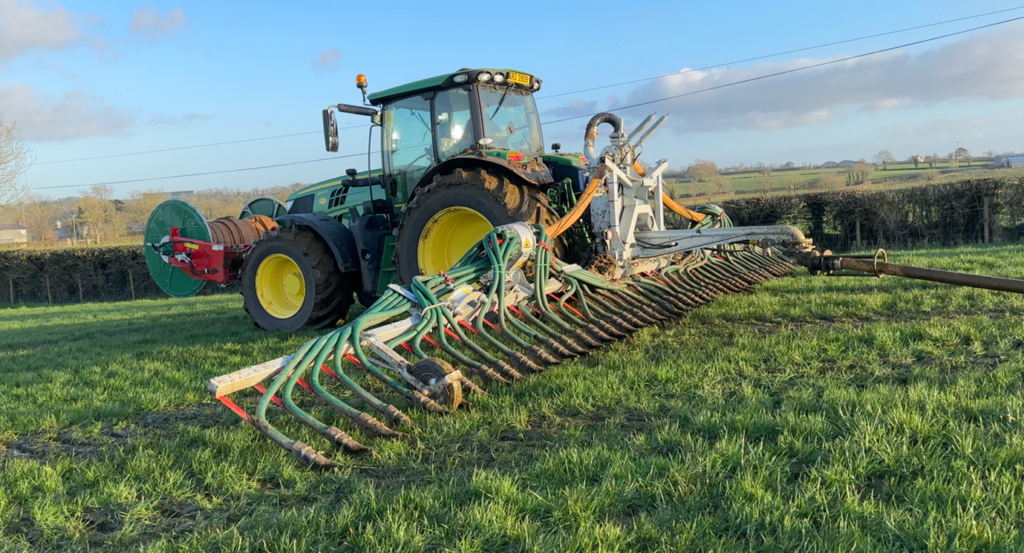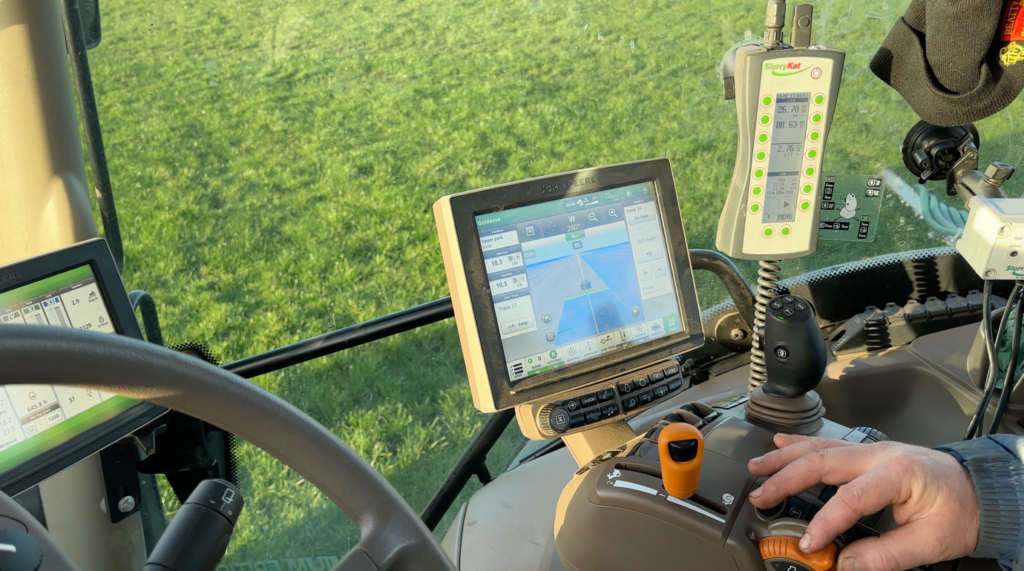“Smart” Slurry
At CAFRE we strive to produce a high quality forage crop which is used to feed the various livestock enterprises on the CAFRE farm. Grass production is managed to maximise efficient use of nutrients, focusing on the demand from the livestock, whilst ensuring soil health is maintained and crop potential is met.

Organic manures and slurry are used to provide many of the crop nutrient requirements. Using innovative application methods CAFRE are minimising environmental impact, targeting demand and recording treatments as part of a wider nutrient planning programme.
CAFRE apply slurry using a trailing shoe system linked by an umbilical pipe to a 10000 gallon nurse tank. The system is pulled by a tractor fitted with StarFire 6000 GPS guidance and autosteer system. The slurry applicator and tractor are connected using ISOBUS, to allow the operator to use the tractor screens and controls to manage the slurry equipment.
The trailing shoe system is a form of LESSE or Low Emission Slurry Spreading Equipment, designed to increase the utilisation of nitrogen in slurry by reducing ammonia emissions, as well as benefiting the environment by reducing the potential for water contamination and nuisance odours.
CAFRE have “smartened” their trailing shoe system by fitting a John Deere HarvestLab NIR sensor. The HarvestLab sensor emits a calibrated beam of light at the stream of slurry as it is pumped onto the field. The sensor measures the quality of light which is reflected back to the sensor.

The reflected light is analysed using a cattle slurry calibration curve. The resultant analysis calculates the nutrient composition of the slurry as it is applied to the field. Information such as total Nitrogen, Ammonium N, Phosphate, Potassium and dry matter can all be measured during application.
The information provided by the sensor is displayed to the operator and can be used in several ways, such as spreading to a fixed nutrient rate by adjusting the speed of application or flow of slurry. Alternatively, if the rate of application is fixed to a specific volume, the amount of nutrients which have been applied can be measured and used to adjust subsequent chemical or organic nutrient applications to meet crop demand.
The GPS enabled tractor pulling the spreading equipment is programmed to maintain the correct width and speed during application. This will prevent overlapping, spreading too close to restricted areas such as riparian strips or areas where runoff risk is high, as well as ensuring application rate is accurate.
After slurry application, CAFRE monitor the grass production to determine if their nutrient management plan is achieving the set targets. CAFRE measure grass growth and utilisation in the field, measure grass yield and quality during silage harvest and measure the quality of silage fed to cattle. In addition to direct grassland measurements, CAFRE also measure animal weight gains and milk production. It is important at CAFRE, to monitor the impact of their nutrient management plan to ensure decisions are effective and continue to improve the CAFRE farms sustainable production.
